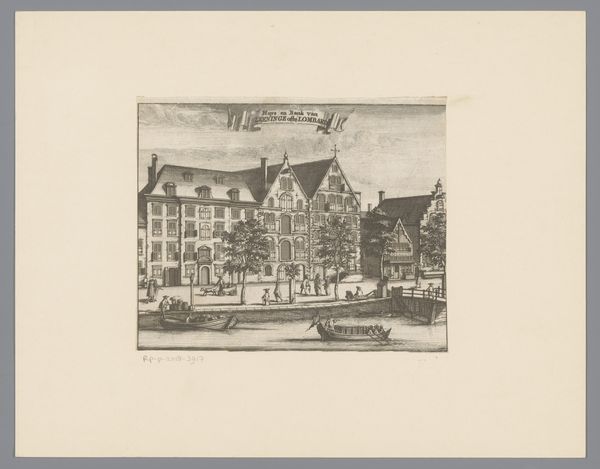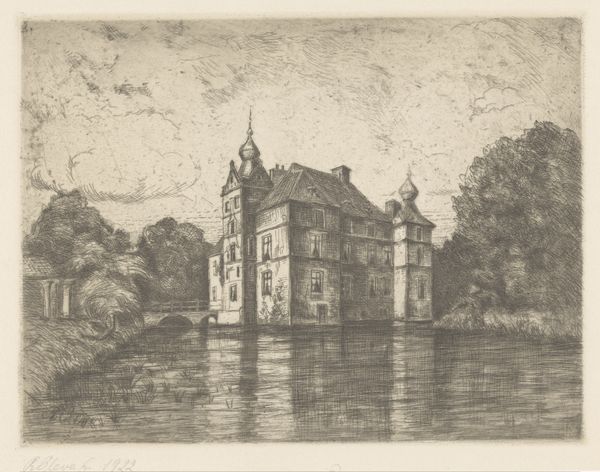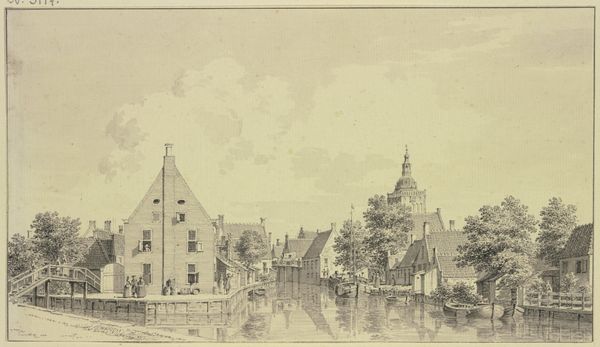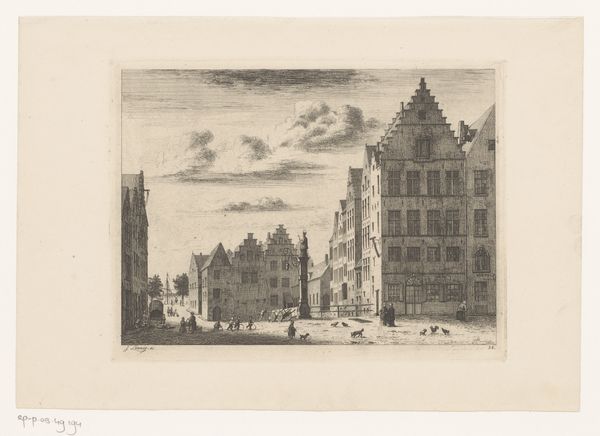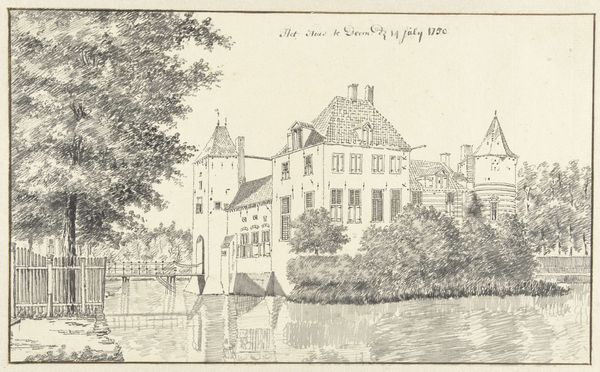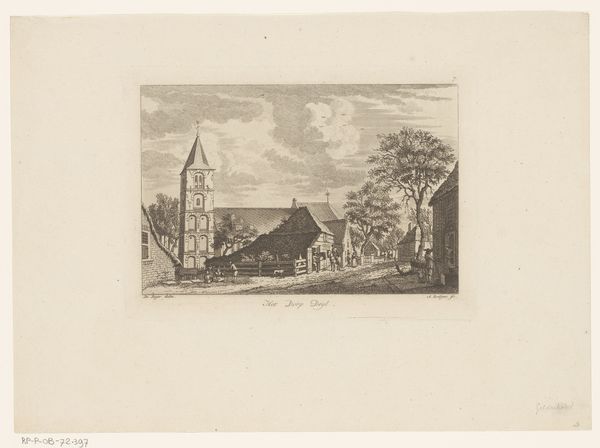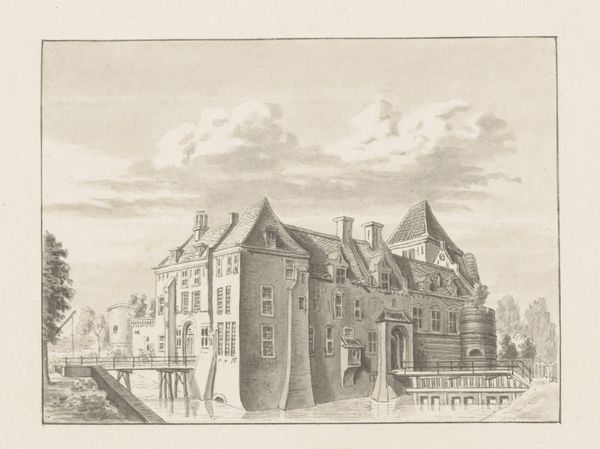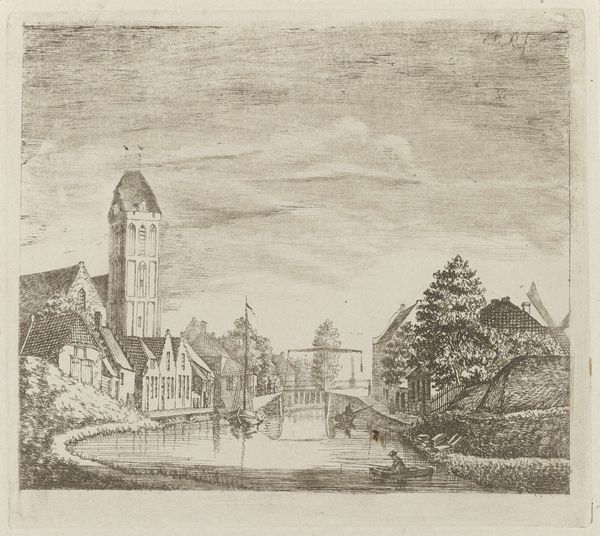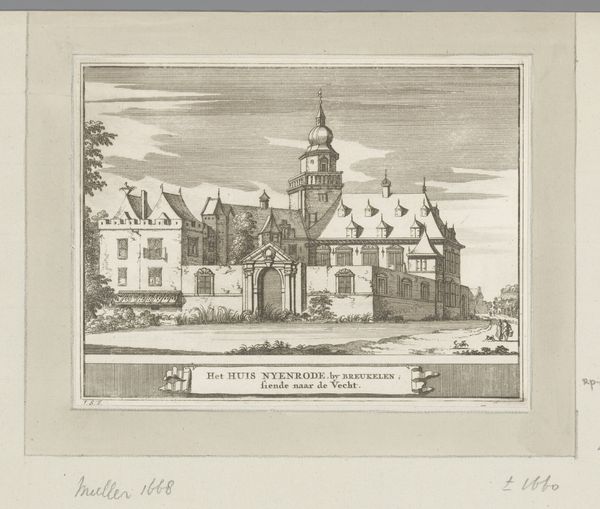
drawing, pencil
#
drawing
#
neoclacissism
#
pencil sketch
#
old engraving style
#
landscape
#
pencil
#
cityscape
#
realism
Dimensions: height 274 mm, width 384 mm
Copyright: Rijks Museum: Open Domain
Curator: Welcome. We’re standing before Augustus Wijnantz’s "View of the Westerkerk and Westerhal in Amsterdam," a pencil drawing from 1835. What’s the first thing that strikes you? Editor: It’s remarkably serene, almost hushed. The gray palette certainly contributes to that, but it's also in the precise details—the stillness of the water mirroring the buildings feels almost reverential. Curator: Precisely! Amsterdam in the 1830s was a city steeped in history, still embracing Neoclassicism, evident in the clean lines and formal arrangement of the scene. The Westerkerk, dominating the skyline, represented not only religious authority but civic pride. Editor: I am always interested in where our eyes are directed, and here it seems our gaze is pointed to this church for a good reason, as this church is filled with interesting symbolisms... and what’s truly interesting about it, I find, is how those buildings almost look like giant faces looking over the streets. Curator: Oh, I love that! Giant, watchful faces. That sense of protection, but also judgment, permeates the composition. The Westerhal, while smaller, complements the Westerkerk, embodying civic administration—governance, perhaps? Editor: The reflections, those hazy replicas in the water, definitely echo more than architectural form. Those could be symbolic of an idealized image of the city itself. Curator: Absolutely. Wijnantz offers more than a cityscape, really. I wonder, what were his intentions and views when making this work, what could be reflected through the image-making, as that time realism was already a thing? What I feel here is how all of the symbolic, as the old engraving style that is so subtle, allows for realism to enter the frame as a powerful statement, like showing, "I see you". Editor: I like how you connected that. Maybe what Wijnantz saw of Amsterdam is both a testament to and an act of faith. Seeing it is not just portraying a reality, but imbuing it with cultural meaning. Curator: A lens, not just a mirror. Well said. Looking again, I wonder if this artwork allows for such readings because it almost feels like it transcends style itself, or maybe uses them for a purpose, like many artists do...
Comments
No comments
Be the first to comment and join the conversation on the ultimate creative platform.
